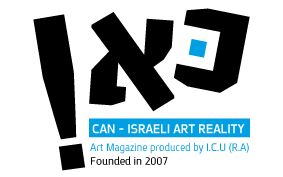
| Home Page | Editor Notices | Museums | Galleries | Publication | Donation | Contact Us |


 | |||||||||||||||
| |||||||||||||||


| |||||||||||||||
| Pinchas Shaar and Moshe Castel at The Moshe Castel Museum of Art in Ma’ale Adumin |
Moshe Castel (1909–1991) and Pinchas Shaar (1923–1996) were two immensely talented artists, whose works are characterized by a unique pictorial language that poetically combines childhood memories, many of which revolve around Jewish plots, the Tanakh, and Hebrew scripture; and the revival of the Jewish people in the Land of Israel. An exhibition presenting their works underscores the originality and value of the art that has developed from the strengthening of the national roots. Thus, it bears a powerful national and educational message. Pinchas Shaar was an outstanding artist, verging on genius, with a highly distinct artistic voice – not just in the Israeli context, but in a global perspective. He is remembered by few today, since his last large solo exhibition in Israel was held at the Tel Aviv Museum of Art in 1961. As we open this exhibition today, on the 100th anniversary of Shaar’s birth, we wish to restore to the public consciousness one of the most original, brilliant, and unique artists that our Land has ever seen. Nobel Prize winner Elie Wiesel wrote in his introduction to the catalogue of Shaar’s exhibition Let My People Go, which was held at the Jewish Museum in New York in 1975 (and here begins the meeting of the two artistic giants, Shaar and Castel): “He is a true artist, one who knows how to dream and how to make others dream. We are moved by his lyricism, his sense of the ridiculous makes us smile. His paintings evoke the su-filled mornings of a Jewish childhood over there, in Jerusalem.” In reality, however, Pinchas Shaar's childhood passed very far from Jerusalem, which he would reach only at the age of twenty-six. As a youth, he endured indescribable suffering in the ??d? Ghetto. Through his art, Pinchas Shaar was able to transcend his tragic life story and leave behind a legacy of amazing artworks, brimming with joy, happiness, and hope. He also influenced numerous other artists, such as Naftali Bezem, Shmuel Bonneh, and Leo Roth. Thanks to his unique and extraordinary combination of Jewish tradition and the innovations of Cubism, Shaar secured the status of an original artist in the contemporary Israeli and Western landscape. Pinchas Shaar’s artistic quest unfolded in parallel to that of Moshe Castel, who likewise combined the legacy of Judaism and Modernist styles in his art. Pinchas Shaar’s artistic biography is similar in many respects to that of Castel, and both men have been the subject of numerous solo exhibitions in the central cities of Western Europe, particularly in France, Belgium, and Switzerland. In 1968, a large picture album dedicated to Shaar’s works came out in French; that same year saw the publication of the first comprehensive album of Castel’s works (a bilingual French-English edition, published in Switzerland). Several works by Moshe Castel are held at the Jewish Museum in New York – the site of the aforementioned solo exhibition of Pinchas Shaar, which took place almost a half-century ago. We are now privileged to host an exhibition of this outstanding artist here, in the heart of the Land of Israel, at the Moshe Castel Museum of Art in Ma’ale Adumin. I would like to thank my right-hand man, the Museum curator Dr. Alek D. Epstein; the artist’s widow, Ms. Elisheva Shaar Caspi; Mr. Zohar Bernard Cohen, and Mr. Omri Dubosc Cohen, for their dedication to the artistic legacy of this wonderful painter and their collaboration on organizing this exhibition. I have no doubt that all those who care about art in general, and Jewish art in particular, will visit it repeatedly, finding in these artworks, and in the renewed permanent exhibition of our Museum, a source of inspiration, prosperity, and creative and spiritual growth for many years to come. Curator: Alek D. Epstein Read more  |
| all rights reserved - CAN ISRAELI ART REALITY |
| סייבורג מחשבים - בניית אתרים |